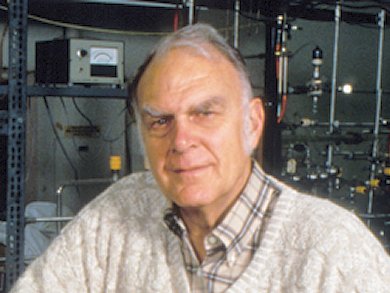Sherwood Rowland, Nobel Prize winner in Chemistry in 1995 and Professor of Chemistry at the University of California, Irvine, USA, passed away on March 10, 2012. Rowland was best known for his contributions to atmospheric chemistry and the discovery that chlorofluorocarbons (CFCs), commonly used in the 70s and 80s as refrigerants, propellants in spray cans, solvents, and blowing agents to make foams, contribute to the decomposition of the ozone layer in the Earth’s stratosphere. His discovery led to the Montreal Protocol, an international treaty phasing out the production and use of CFCs and other ozone depleting substances.
Sherwood Rowland studied at Ohio Wesleyan University, USA, before moving to the University of Chicago, USA, for his M.S. and Ph.D. In Chicago, he joined the group of William Libby, where he worked on the chemistry of radioactive bromine atoms and their eventual radioactive decay. After gaining his Ph.D. in 1952, he took up an academic post at Princeton University, New Jersey, USA. In 1956, he moved to the University of Kansas, USA, before becoming a professor of chemistry at the University of California, Irvine, in 1964.
In 1973, Mario Molina joined Rowland’s research group as a postdoctoral researcher and together they began to explore the role of CFCs in the atmosphere. Molina and Rowland concluded that in the stratosphere CFCs would be dissociated by UV light and release Cl atoms, a know catalyst for ozone depletion. The Rowland–Molina hypothesis was strongly disputed by representatives of the aerosol and halocarbon industries. The results of their investigations were supported by independent work at the US National Academy of Sciences and by the report in 1985 of a hole in the ozone layer over Antarctica.
- Stratospheric Ozone Depletion by Chlorofluorocarbons (Nobel Lecture),

Sherwood Rowland,
Angrew. Chem. Int. Ed. 1996, 35(16), 1786–1798.
DOI: 10.1002/anie.199617861 - Stratospheric sink for chlorofluoromethanes: chlorine atom-catalysed destruction of ozone,
M. J. Molina, F. S. Rowland,
Nature 1974, 249, 810–812.
DOI: 10.1038/249810a0


